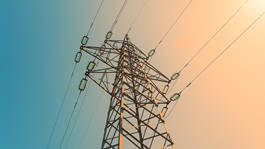
Publication
Watt’s up: Regulatory round-up
Norton Rose Fulbright provides a monthly overview of the key updates to Australian East Coast energy regulation in December 2025.


Global | Publication | June 2025
On 6 March 2025, the National Development and Reform Commission (NDRC), the Ministry of Industry and Information Technology (MIIT), the Ministry of Commerce (MOFCOM), the National Data Administration and the National Energy Administration (NEA) jointly released Opinions on Promoting High-quality Development of the Renewable Energy Green Electricity Certificate Market (关于促进可再生能源绿色电力证书市场高质量发展的意见) (the Opinions).
The Opinions, as part of China’s initiative to increase the market competitiveness of its green energy certificate (also known as renewable energy green electricity certificate, which has an electronic form with a unique identification code, the GEC) regime and efforts to meet its carbon neutrality commitment before 2060, provide guidelines and action plans on further establishing a more developed GEC regime.
In short, relevant Chinese authorities, as provided in the Opinions, aim to (i) stabilize the market offerings of GECs, (ii) stimulate the demand for GECs, (iii) improve the market trading mechanism for GECs (with an aim to complete the mechanism establishment by 2027 and a further fine tuning of the mechanism by 2030), and (iv) promote the international recognition and circulation of the GECs.
This article summarizes the main regulatory framework and working mechanisms of the GEC regime in China by addressing eight key questions that are frequently asked.
On 25 July 2023, the NDRC, the Ministry of Finance (MOF), and the NEA jointly issued the Notice on Full Coverage of Renewable Energy Green Power Certificates to Promote Renewable Energy Electricity Consumption (关于做好可再生能源绿色电力证书全覆盖工作促进可再生能源电力消费的通知) (the Notice 1044), which replaced China’s previous pilot regime introduced in 2017 on the issuance and subscription of GECs for renewable energy generation/consumption1. The NEA further issued the Rules on the Issuance and Trading of Renewable Energy Green Electricity Certificates (可再生能源绿色电力证书核发和交易规则) (the GEC Trading Rules) on 26 August 2024, which would specifically regulate the issuance and trading of China GECs (together with the Notice 1044, collectively the GEC Rules).
According to the GEC Rules, a GEC is the only proof of the environmental attributes of green energy electricity, and therefore the only evidence for recognizing the generation and consumption of green energy/electricity in China. One GEC unit corresponds to 1,000 KWH of green energy power, with a validity period of 24 months (calculating from the first calendar month that such electricity is generated).
Entities (including foreign invested entities (FIEs) incorporated in China) which have purchased/obtained GECs, may use them as evidence to demonstrate their consumption of renewable energy and to offset their carbon emissions. Multinational national companies which have set up FIEs in China and are members of international corporate initiatives like RE100 (namely, 100% Renewable Electricity) may also utilize GECs purchased/obtained by their China established FIEs to demonstrate their compliance with climate and renewable energy requirements under the respective programs (subject however to the relevant recognitions on the credits of the GECs).
The Qualification Management Center for Electricity Business of the NEA is the government department responsible for the issuance and administration of the GECs.
Unlike the 2017 Notice, under which the GECs were only issued to renewable energy generated by PRC onshore wind and utility-scale solar generators, the currently applicable GEC Rules have expanded the scope to almost all renewable energy projects, which now include: (i) onshore and offshore wind power, (ii) solar power, (iii) conventional hydropower, (iv) biomass power, (v) geothermal power, and (vi) tidal power.
A renewable energy project is required to open a real name account (a GEC Account) via the National Green Electricity Certificate Issuance and Trading System (国家绿证核发交易系统) to obtain the GECs. The NEA issues tradeable GECs to each renewable energy project monthly based on the amount of electricity generated and dispatched into the grid as verified and confirmed by the NEA. The information of the GEC Account registered with the above National Green Electricity Certificate Issuance and Trading System will be synchronized with the GEC Trading Platforms (defined below), and the renewable energy project (being the GEC generator) may thereafter participate in the trading of the GECs by using such GEC Account.
GECs can either be traded independently (known as an Unbundled Trade) or traded together with green electricity (known as a Bundled Trade). Please refer to the next question on the comparison between an Unbundled Trade and a Bundled Trade.
GECs traded via an Unbundled Trade, can be traded on the China Green Electricity Certificate Trading Platform (中国绿证电力证书交易平台), the Beijing Power Exchange Center (北京电力交易中心) and the Guangzhou Power Exchange Center (广州电力交易中心) (such platforms collectively, the GEC Trading Platforms).
Unbundled Trade of GECs is usually conducted in the following ways:
According to the GEC Trading Rules, through Unbundled Trade, the actual price of the GECs should be market-oriented and follow the offerings and needs of GECs on the market. This is also in line with the market practice of the relevant GEC Trading Platforms according to our no-name basis telephone consultations.
Under an Unbundled Trade, a GEC is purchased through a GEC Trading Platform in a manner mentioned under question 3 above by a buyer, but there is no physical delivery of green electricity to or actual consumption of green electricity by the buyer. Same as the international practice, through purchasing the GECs, a buyer only obtains the environmental value/benefits of the GECs.
However, a Bundled Trade works differently. According to the Basic Rules on Mid/Long Term Trading of Electricity – Green Electricity Trading Chapter (电力中长期交易基本规则—绿色电力交易专章) jointly issued by NDRC and NEA on 24 July 2024 and the green electricity trading rules issued by certain major power exchanges in China (Power Exchanges), a Bundled Trade is for the buyer to purchase and consume green electricity. Therefore, there will be physical delivery of green electricity to the buyer through the grid, and the corresponding GECs will be transferred to the buyer at the same time.
Please also be mindful of the following points relating to green electricity trading:
No. Currently, only entities incorporated in the PRC (including FIEs) are qualified to purchase GECs, while foreign incorporated entities cannot purchase GECs in China.
In addition, PRC incorporated companies are not allowed to purchase or hold GECs on behalf of others (no matter they are foreign or domestic entities), which means that a foreign incorporated entity cannot ask its China established FIE subsidiary to purchase or hold GECs on its behalf. Instead, the FIE GEC holder can only retire the GEC itself.
No, it is not a mandatory requirement for a PRC entity to purchase and consume GECs.
Having said the above, it is worth noting that the Opinions provide that PRC authorities will gradually promote the mandatory purchase and consumption of GECs, and accelerate to increase green electricity consumption ratio for industries such as steel, nonferrous metals, building materials, petrochemicals, and chemicals etc. All these actually aim to achieve China’s commitment on carbon neutrality.
In addition, it is anticipated that in the future there will be industrial sectorial targets for companies within various industries within the Chinese company. The steel sector has recently been added as a sector covered by China’s emission trading scheme (see below), but it is likely that more general emission targets will be set for each sector. It is not yet clear exactly how GECs will feed into these emission targets, except that they will of course be evidence to support emissions connected with a company’s electricity consumption.
Currently, GECs can only be traded once on one of the designated GEC Trading Platforms and cannot be resold.
Therefore, if a PRC company (such as a FIE) purchases a GEC from a renewable energy generator that generates and sells GECs at a GEC Trading Platform, such PRC company cannot resell the purchased GEC to any third party and shall only retire the same in its own name.
China applies two carbon emission regimes consisting of:
The subjects being traded via the above two systems are allowances/quotas or credits, which essentially are the right to emit certain amounts of greenhouse gases. To the extent a company’s allowance or quota is used up, it may purchase carbon emission allowances or credits over the ETS/CCER system (as applicable) to offset its carbon emissions.
On 26 August 2024, the NEA and MEE jointly issued the Notice on Syncing the Renewable Energy Green Electricity Certificates and the Voluntary Emission Reduction Market (关于做好可再生能源绿色电力证书与自愿减排市场衔接工作的通知), which, with a valid term of 2 years from 1 October 2024 (Transition Period), aimed to avoid double counting of environmental attributes on GECs and CCERs. According to the notice, during the Transition Period, (i) deep-sea offshore wind power and concentrated solar power projects (that are connected to the grid) can independently choose to issue and trade GECs or apply for the CCERs, and (ii) if such a project chooses to participate the GEC trading, it can no longer apply for CCERs for the same amount of electricity, and vice versa.
Currently only CCERs may be used by the companies under the mandatory ETS regime to offset carbon emission allowances (at a prescribed percentage). Notice 1044 provided that the authorities in China will study and promote the connection and coordination between GECs and China’s carbon markets (including the ETS and CCER regimes). It remains to be seen how the connection between these two regimes, from both legislative and practical perspectives, will evolve in the future.

Publication
Norton Rose Fulbright provides a monthly overview of the key updates to Australian East Coast energy regulation in December 2025.

Publication
Welcome to the third issue of Global Asset Management Review.
Publication
The Financial Conduct Authority’s (FCA) October 2025 Consultation, CP25/28 Progressing Fund Tokenisation, takes a clear step towards embedding distributed ledger technology (DLT) in the UK’s authorised fund regime.
Subscribe and stay up to date with the latest legal news, information and events . . .
© Norton Rose Fulbright LLP 2025